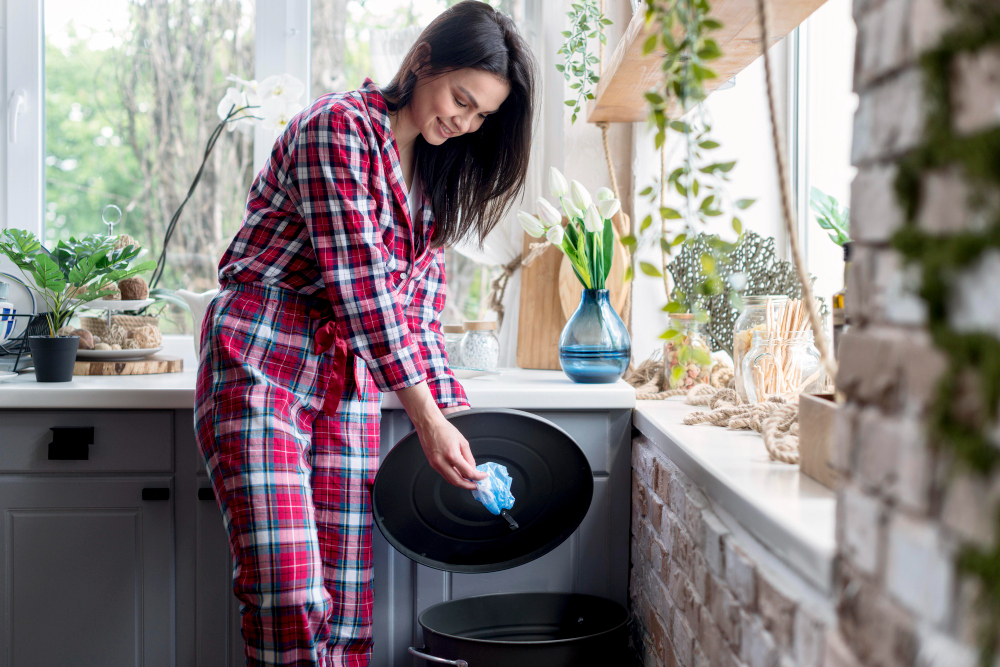
Are you wondering how to separate your garbage, but so far the amount of information on this subject has only led to confusion? If so, we have some simple tips that will help you quickly learn how to separate your garbage into 5 fractions
Although segregating garbage into five different bags may seem complicated at first glance, with time this type of activity will become a pleasure and routine for us. Garbage should be divided into five fractions, and each of the bags must be intended for a different type of waste. The first one should be prepared for metals and plastics, then paper, next glass, bio waste and at the very end mixed waste
Currently the uniform system of segregation is being implemented in Poland and as a part of these changes – the bags for paper are blue, those for metals and plastics are yellow, glass is green and those prepared for bio waste are brown. If the local authorities decide to segregate glass into two fractions – then coloured glass should be placed in green containers and colourless glass in white. Waste segregation is a necessary aspect due to the fact that each Pole produces on average 300 kg of garbage a year. Unfortunately, as much as 40 percent of it ends up in a landfill and only 25 percent is reused due to recycling
When garbage is properly segregated, it becomes a valuable raw material. Glass and aluminum are 100 percent recyclable and can be recycled an infinite number of times. In addition, post-processing of recycled material reduces the energy required to produce a new product by as much as 4 hours of operation of a 100-watt light bulb. When it comes to segregating plastic, it’s worth noting that just 35 plastic bottles make a sweatshirt
When it comes to the container for metals and plastics, we primarily put plastic drink bottles and caps in it. It is also necessary to place plastic food packaging, including yoghurt or fruit baskets, in these containers. Plastics also include multi-material packaging such as juice and milk cartons. The container is designed for segregation of cleaning product packaging, plastic bags, sacks, plastic bags, aluminum beverage and tin cans, and scrap iron and non-ferrous metals
Do not put used medical supplies or oil containers in the container for metals and plastics. It is important that the packaging is emptied and bottles, cans and cardboard boxes are crushed
>> See also: How to properly separate waste?
On the other hand, in the paper container we should put paper, cardboard and cardboard packaging. This is an ideal place for all kinds of catalogs, leaflets, newspapers and magazines. You should also put notebooks, books, school and office stationery as well as printed sheets in this bin. It is also very important not to throw used tissues and disposable towels into this container, even if they are made of paper. What’s more, no milk or beverage cartons, no greasy takeaway bags, no fertilizer bags or building material bags
The green bin, on the other hand, is for bottles and jars, glass bottles and other packaging for cosmetics. This container is not the right place to throw away ceramics, porcelain, crystal, light bulbs, mirrors and window panes as well as syringes and thermometers
Many people have trouble distinguishing between bio waste. This includes fruit and vegetable waste such as peelings, seeds and stones. Apart from that, shrubs, tree branches, flowers, sawdust and wood if it has not been treated are also considered bio waste. Our household also generates bio waste in the form of food scraps, coffee and tea grounds, and eggshells. It is very important that animal bones, feces, ash, soil, stones, treated wood, particle board and fiber board should not be placed in this container. Bio waste should not be placed in bagged containers